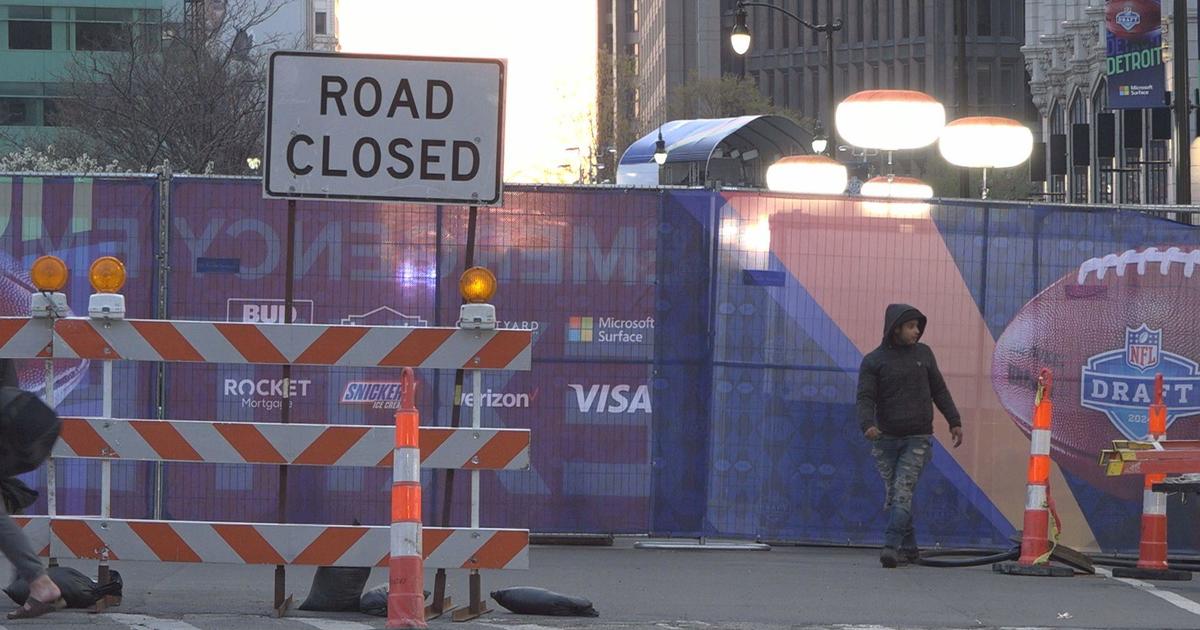Students Pack U-M Auditorium To Watch Mars Rover Curiosity Landing
ANN ARBOR (WWJ/AP) - More than a hundred people packed into a campus auditorium in Ann Arbor to watch a technical and scientific marvel from the NASA space program.
Students in the space sciences program at the University of Michigan cheered on the Mars Rover Curiosity's successful landing early Monday morning (10:32 p.m. pacific time).
Harvey Elliott, a PhD student in planet and space sciences, was one of the students that watched the landing.
"It went from some chatter in the room to absolute silence during the seven minutes," said Elliott. "You would get the heart-beat from the Rover and everyone would cheer ... until we finally got the confirmation that Curiosity was on the ground and then there was a huge amount of applause."
"I got a text message from my advisor with pictures of him and some of the people we collaborate with at JPL (NASA's Jet Propulsion Laboratory)," said Elliot.
Two U of M professors, meanwhile, were in the NASA control room in California for the unprecedented touch down. One of them will stay for the majority of the rover's mission.
The robotic explorer Curiosity blazed through the pink skies of Mars, steering itself to a gentle landing inside a giant crater for the most ambitious dig yet into the Red Planet's past.
Cheers and applause echoed through the NASA Jet Propulsion Laboratory late Sunday after the most high-tech interplanetary rover ever built signaled it had survived a harrowing plunge through the thin Mars atmosphere.
At a budget-busting $2.5 billion, Curiosity is the priciest gamble yet, which scientists and government officials hope will pay off with a bonanza of discoveries.
"We are the only country that has ever done anything like this," boasted John Holdren, the senior advisor to President Obama on science and technology issues, who was in the JPL control room as Curiosity touched down. "Many new technologies had to work in perfect synchronization."
President Obama called the landing "an unprecedented feat of technology that will stand as a point of national pride far into the future." In a statement, he added that the landing "parallels" the new path of partnering with American companies to send more astronauts into space on American spacecrafts.
It was NASA's seventh landing on Earth's neighbor; many other attempts by the U.S. and other countries to zip past, circle or set down on Mars have gone awry.
The voyage to Mars took more than eight months and spanned 352 million miles. The trickiest part of the journey? The landing. Because Curiosity weighs nearly a ton, engineers created a more controlled way to set the rover down. The last Mars rovers, twins Spirit and Opportunity, were cocooned in air bags and bounced to a stop in 2004.
The nuclear-powered Curiosity, the size of a small car, is packed with scientific tools, cameras and a weather station. It sports a robotic arm with a power drill, a laser that can zap distant rocks, a chemistry lab to sniff for the chemical building blocks of life and a detector to measure dangerous radiation on the surface.
It also tracked radiation levels during the journey to help NASA better understand the risks astronauts could face on a future manned trip.
FIND OUT MORE ABOUT THE ROVER CONNECTION AT U-M.
(TM and © Copyright 2012 CBS Radio Inc. and its relevant subsidiaries. CBS RADIO and EYE Logo TM and Copyright 2012 CBS Broadcasting Inc. Used under license. All Rights Reserved. This material may not be published, broadcast, rewritten, or redistributed. The Associated Press contributed to this report.)



